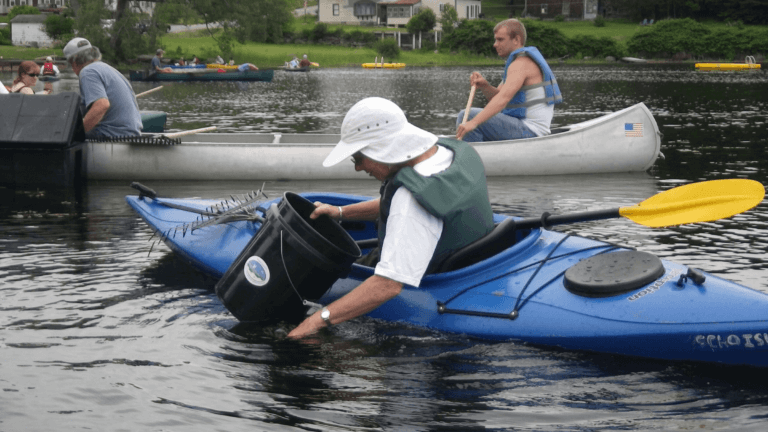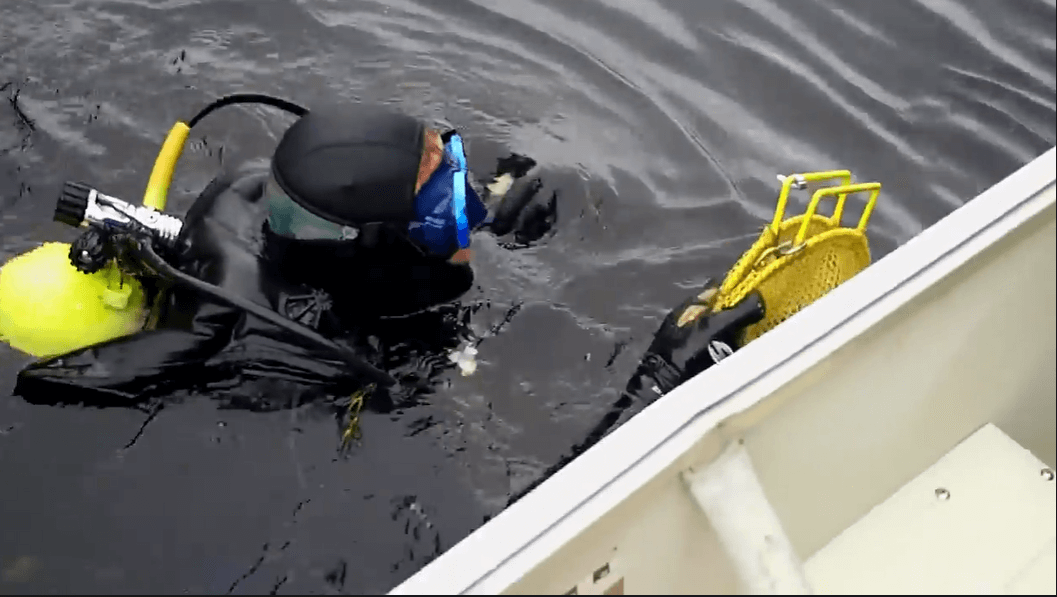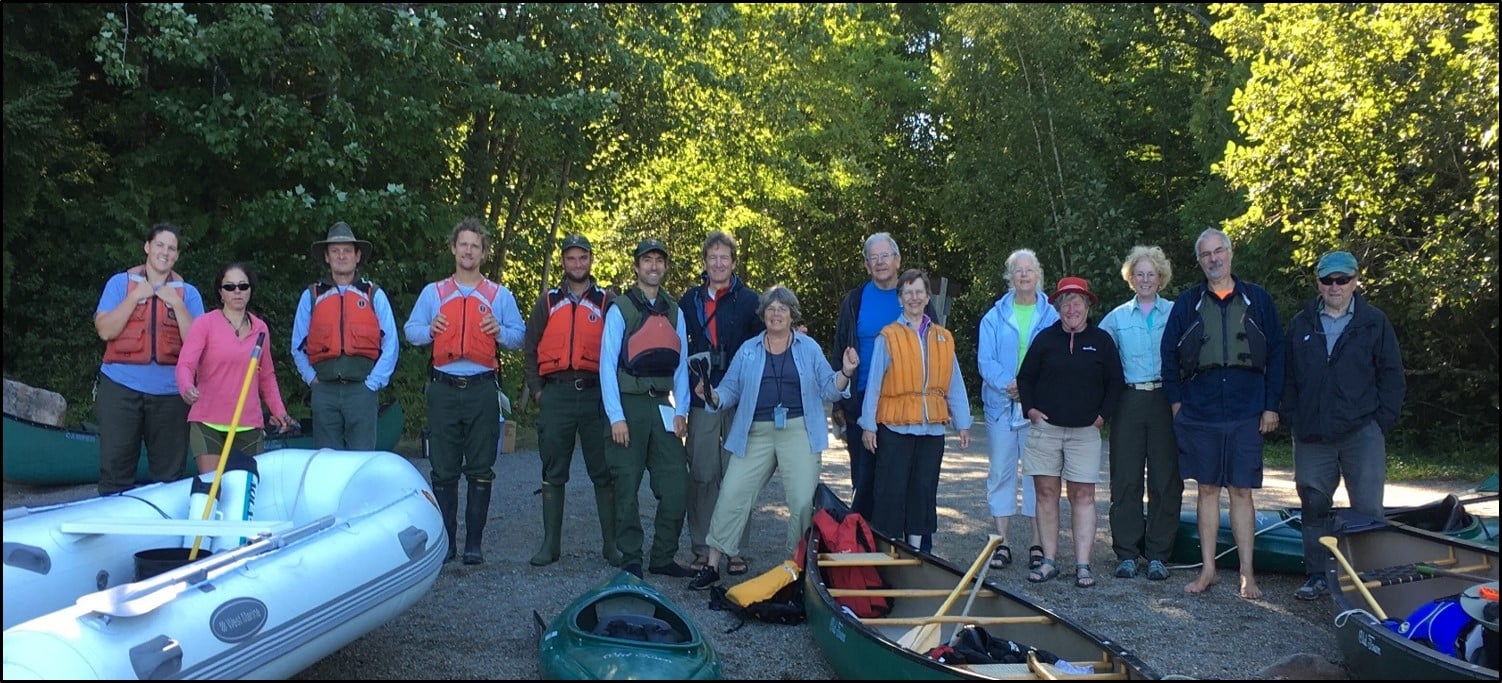Aquatic Invasive Species Prevention

Quick Links
LSM Programs & Tools
Latest News from LSM
Forms & Data Sheets
The introduction of non-native, invasive aquatic plant and animal species to the United States has been escalating with widespread destructive consequences. The impacts of the spread of invasive aquatic plants are well known: habitat disruption, loss of native plant and animal communities, reduced property values, impaired fishing and degraded recreational experiences, and enormous and ongoing control costs.
With over 6000 lakes and ponds, and thousands of miles of stream habitat, the task of preventing the spread of invasive aquatic species (IAS) in Maine waters is one of the greatest environmental challenges of our time. Invasive plants and animals are moved about in complex and often unseen ways, and the speed at which a new introduction can explode into an ecologically and economically disastrous infestation is well documented. Once an invader is well established, eradication is extremely difficult and costly, if not impossible.
Prevention is the first step to fighting this invasion, but no matter how comprehensive and aggressive our statewide prevention effort, some invasive organisms will slip through the cracks. In such cases, it is crucial that the invaders are detected as early as possible, before they have had an opportunity to cause significant damage or to spread to other waterbodies. Early detection provides the best hope of eradication.
The critical role volunteers play in this effort cannot be overstated!
As awareness of the threat AIS poise to Maine waters has emerged, Mainers have taken swift and decisive action. The State of Maine has passed multiple forms of legislation, including a bill that outlaws the sale, propagation, and introduction of eleven invasive aquatic plants to Maine waters. Currently, six of these “outlawed” plants are known to be established in Maine waters: variable leaf water-milfoil (and a hybrid form of this plant), Eurasian water-milfoil, curly-leaf pondweed, European naiad, European frogbit and hydrilla. Information about further legislation can be found here.
Case studies of infestations throughout the US indicate that once invasive plants become well established in a lake, stream or pond, they are nearly impossible to eradicate. A comprehensive, ongoing effort to prevent the introduction of aquatic invaders to Maine waters, through public education and Courtesy Boat Inspections is, and should remain, a top priority.
Courtesy Boat Inspection data is available in a near-real time format HERE.
But Maine is a large state, and despite our most aggressive efforts to ward off new infestations a significant probability remains that an invasive plant will manage to slip through the cracks. Early detection of a new infestation provides the best hope of eradication. In cases where eradication is not possible, the earlier an infestation is detected, the greater the chance that the invasive plants can be managed effectively using low-impact methods. Maine needs an effective, statewide early detection system designed to screen the millions of acres of aquatic plant habitat on an ongoing basis. It is here that LSM’s trained volunteers play the extremely important role, acting as Maine’s widespread early detection network.
Since the first Invasive Plant Patrol (IPP) workshop in 2002, LSM has trained thousands of individuals to screen Maine waters for aquatic invaders. The program was specifically designed to engage widespread participation by individuals with varying amounts of time and expertise to commit to the endeavor, from those who simply want to be more knowledgeable when they are out recreating on their lake, to those who are conducting and leading comprehensive lake-wide surveys. Aquatic species data is available in a near-real time format (not reviewed for errors) or in a reviewed, quality-assured format on our Lakes of Maine webpage.
Datasheets are available in the menu under Resources > Forms & Datasheets.
IPP Travel team
Join us TODAY

Are you ready for an unforgettable summer adventure? Lake Stewards of Maine (LSM) is looking for passionate volunteers to join our Aquatic Invasive Species (AIS) team during our 2024 summer field season. Volunteers are key to our efforts, and we are seeking dedicated and active lake stewards to join our Traveling IPPer team.
What’s in store for Traveling IPPers?
- Explore beautiful lakes in every corner of the State
- Get hands-on training in aquatic plant surveying
- Learn to identify native and invasive aquatic plants
- Play a pivotal role in raising awareness about AIS in Maine
- Help protect our precious waters from invasive species
Traveling IPPers will aid LSM staff in aquatic invasive screening surveying and rapid response efforts across Maine. Our travels next summer include a weeklong trip to Cross Lake as part of our Northern Maine Initiative. Becoming an LSM Traveling IPPer is a fantastic way to experience a new region of the state and meet new people.
Are you ready to embark on a lake steward adventure? Each adventure is an opportunity to explore, learn, and make a difference in protecting Maine’s lakes, and volunteers can commit as much time as their schedules allow. Contact stewards@lakestewardsme.org to learn more about next summer’s adventures and volunteer opportunities.
Related Information

Aquatic Invasive Species Workshops
Lake Stewards of Maine offers a variety of free Invasive Plant Patrol (IPP) workshops. IPP Workshops are designed to teach volunteers how to look for suspicious plants, determine native from invasive species, and how to properly survey and report findings.
IPP volunteers are crucial to LSM’s work monitoring for aquatic invasive species. On this page volunteers can find out details, dates, and registration links for both in-person and online IPP workshops.
